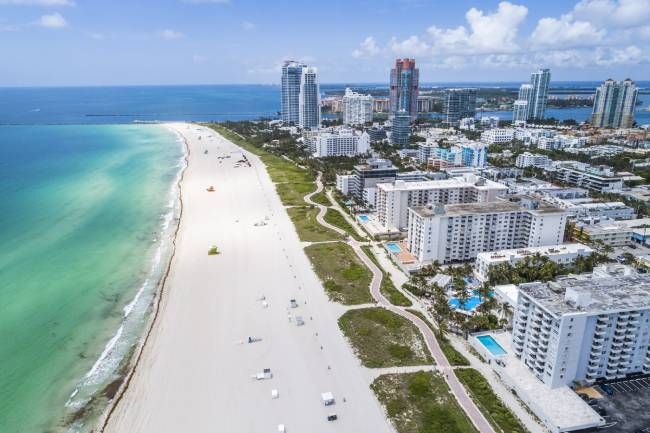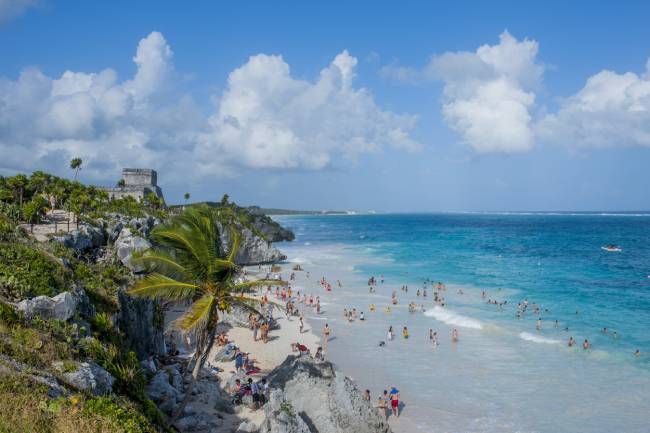For the most part, the difference between traveling around the U.S. and Europe is night and day.
RELATED: Best things to do in London that will feel safe following COVID-19
There are quite a few states in the U.S. that are wide open, like Florida, Georgia, and Texas with little to no restrictions, but in Europe, partial or full lockdowns that were introduced at the beginning of the year in most countries are still in place.
Eiffel Tower visitors celebrate International Women's Day in Paris
Now that vaccines are rolling out, some areas are easing lockdowns or releasing new measures depending on the area’s covid infection and hospitalization rates and overall risk, according to the BBC.
Even though the CDC recommends not to travel at this time, Americans can see the light at the end of the proverbial tunnel and travel lovers are wondering….when can I travel wherever I want to go - and when will Europe reopen for travel from the U.S.?
We break down that and more (i.e. spring break travel) below.
When will travel between the US and Europe reopen?
Tourists take in the Colosseum in Rome
Unfortunately, there’s no set date. It’s not clear when travel will open from the U.S. to all of Europe just yet because of European guidelines and restrictions that haven’t been lifted, according to Afar.
MORE: Is it safe to book a summer vacation & when can we book?
In March 2020, E.U. leaders put travel restrictions into place for most foreigners entering Europe to help stop the spread of Covid-19. They shrunk that list to six countries, and the United States wasn’t on it.
On the flip side, the U.S. still has a ban in place on travelers from the UK, Ireland, and the European Schengen area, with the exception of U.S. citizens and permanent residents.
What are the current US travel restrictions?
The South Beach skyline in Miami, a popular spring break destination
As we mentioned, the CDC is still recommending that you do not travel at this time, adding that “travel increases your chance of spreading and getting COVID-19”.
If you travel out of the country, all air passengers coming to the United States, including U.S. citizens, are required to have a negative COVID-19 test result or documentation of recovery from COVID before you can board a flight back home.
That means, as of right now, you’ll have to find somewhere to get a covid test with a quick turnaround result time before you can head back to the States.
Read more HELLO! US stories here
As far as travel within the U.S., travel restrictions vary from state to state. So, it’s very important to do your research before you plan a trip. In New York, for example, travelers entering the state must quarantine for 10 days. Governor Andrew Cuomo announced Thursday that those restrictions will be lifted on April 1st.
Other places like Florida and Georgia have no travel restrictions once you're there. It’s also key to research what you can do when you get there. Some states, like California, have not opened everything back up just yet.
What countries can fully-vaccinated Americans travel to?
Thailand is one of the places that will ease restrictions for fully-vaccinated Americans
Although it’s still early in the vaccination process, some countries have already announced that they will allow travelers in who have been vaccinated.
Some of those places include Iceland, Cyprus, Lebanon, Seychelles, Thailand, Slovenia, Poland, Lithuania, Estonia, and Georgia.
Where can I travel for Spring break?
Beachgoers enjoy a dip in the ocean in Tulum, Mexico
The CDC is still recommending no travel for spring break. However, you can still travel to Mexico, Hawaii, and certain areas of the Caribbean, as well as anywhere in the U.S. It's best to hold off on Europe for now until restrictions are lifted.
It is important to pay attention to travel restrictions in areas where you would like to travel though, and to take a covid test three days from your departure date. That is a requirement for most areas in the Caribbean and Hawaii.
As we mentioned above, you need to get a test while you’re at your destination at least three days before you depart. That is a requirement to enter back into the U.S.














